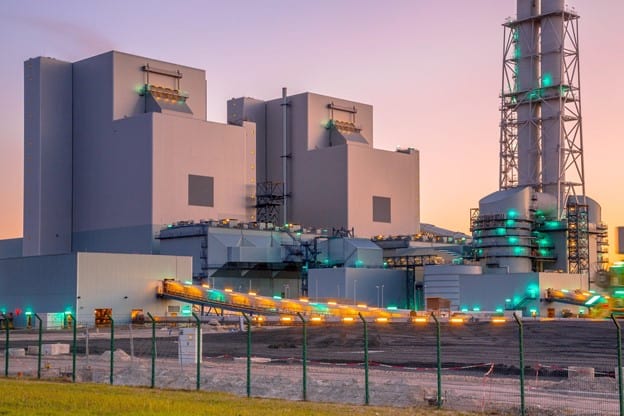The world is amid numerous ecological changes. Carbon emissions are a significant factor affecting global warming and climate change. World leaders and organizations are looking for ways to leave fossil fuels behind and integrate renewable energy into our everyday energy needs. This guide will show the biomass energy industry and green energy potential by looking at non-renewable and renewable energy and paying particular attention to a promising renewable energy source – biomass.
What Is Biomass?
The term biomass refers to non-fossilized and biodegradable organic matter that originates from vegetation, animals, and microorganisms derived from biological sources. The term encompasses products, byproducts, residues, and waste from forestry, agriculture, and other related industries. Energy is generated in organic materials through organic carbon and chemical energy obtained by organisms either directly or indirectly through photosynthesis.
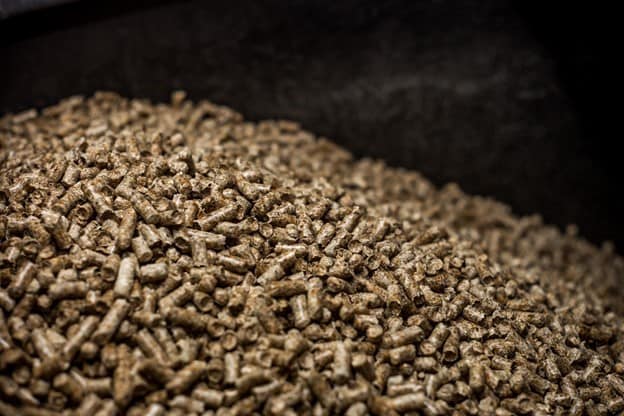
Renewable vs. Non-renewable Energy Resources
Non-renewable energy resources are those that cannot be replaced or are replaced very slowly by natural processes. The primary source of non-renewable energy in the world today is fossil fuels – crude oil, natural gas, and coal. These fuels are made from organic material that has gone through thousands of years of biological and geological processes. Nuclear energy also falls under non-renewable energy because of the limited supply of uranium on the planet.
Renewable sources, also known as clean energy, are generated from natural sources that can be replenished over a relatively short period. Examples of renewable energy sources include solar power, wind energy, geothermal, hydroelectric power, and biomass power.
The Most Popular Renewable Energy
Of all the different types of renewable energy that exist, biomass is the most popular. The world is on a mission to modernize biomass energy by the year 2050. The goal is to have biomass provide half of the total energy demand in the world. It currently provides around 10% of the world’s energy supplies and is mostly used as thermal energy in cooking and heating.

Conversion Technologies in Biomass Energy Industry
Biomass is present in our planet’s natural cycles. Innovation and technology make it increasingly simple, economical, and practical to extract bioenergy from biomass feedstock. There are numerous methods of extracting bioenergy, and let’s check them out:
- Direct combustion – The most common form of bioenergy involves the combustion of biomass feedstock. Most commonly used to produce heat.
- Thermal conversions – These are processes that utilize heat to change the chemical structure of biomass into a better and more usable fuel. The thermochemical conversions are torrefaction, pyrolysis, and gasification. The main difference between these conversions is the environment (oxygen levels and heat) to which the biomass is exposed. Thermal conversions can produce tangible, gaseous, and liquid fuel.
- Chemical conversions -The processes that are meant to change biomass into another form. The goal is to make the biomass more practical and powerful. Biomass can be converted into many commodity chemicals and is typically used to produce liquid fuels.
- Biochemical conversions – Biochemical conversions utilize natural processes to break down biomass and change its form. The process is typically carried out with the use of microorganisms and creates liquid and gaseous fuels. Biochemical conversions include composting, anaerobic digestion, and fermentation.
Biomass Is Obtained From a Wide Variety of Materials, and Dedicated Energy Crops Are the First One
Dedicated energy crops are crops grown explicitly for energy production. They are non-food crops grown on marginal land that is not suitable for crops meant for human consumption. These are adaptable to a wide range of soil and climate conditions, which means that they can easily take lands that are not ecologically suited for conventional farming practices.
Energy Crops Can Be Divided Into Two General Categories – Woody and Herbaceous
Woody crops are fast-growing hardwood trees that are harvested within 4-8 years of planting. They are grown and harvested at a relatively slower pace, so they are often referred to as short-rotation energy crops. Short-rotation woody crops include hybrid poplar, silver maple, hybrid, willow, green ash, eastern, cottonwood, black walnut, sycamore, and sweetgum.
Herbaceous energy crops are grasses that are harvested annually. They typically take about two to three years to grow to a quantity that can meet our energy needs. These plants tend to be perennial (live for more than two years) and include:
- Miscanthus,
- Switchgrass,
- Bamboo,
- Tall fescue,
- Wheatgrass,
- Sweet sorghum,
- Kochia.
Agricultural Crop Residue Is Produced Mostly in Farms
Growing energy crops is not the only way agriculture can provide us with biomass. All agricultural processes tend to leave agricultural waste or residue. These are the byproducts of cultivating crops for our use. Large quantities of residue are produced in most farms and are typically underutilized. In most circumstances, these residues are composted, burnt, or used as cattle feed. However, they carry a lot of energy-generating potential.
Crop Residues Are Extremely Useful
They can be processed into biofuels or even transformed into heat or electricity through thermochemical processes. Residues are different from other solid fuels (char briquette, charcoal, wood) because of seasonal availability, higher contents of volatile matter, and lower density and burning time. Examples of crop residues include agricultural wastes like:
- Stalks,
- Leaves,
- Husks,
- Peels,
- Pulp,
- Stubble,
- Shells,
- Straw,
- Bagasse.
Forestry Biomass Feedstocks Carry Massive Potential in the World of Renewable Energy
These feedstocks can be divided into forest residues and whole-tree biomass chosen exclusively for biomass purposes. Forestry residues are a byproduct of operations like plantation thinning, clearing roads for logging, extracting stem wood for timber and pulp, and even natural attrition.
Harvesting operations typically remove about 25-50% of the volume, leaving the residues available for biomass energy. These residues can take the form of treetops, limbs, culled trees, and tree components that are otherwise unusable.
Forestry Biomass Feedstocks Do Not Have to Be Destructive
We can also make use of excess biomass in vast forests. Harvesting excessive woody biomass can help with forest management by reducing the risk of pests or fires and assisting in forest productivity, vitality, restoration, and resilience. It has great potential for harvesting wood fuel without negatively impacting the ecological system.
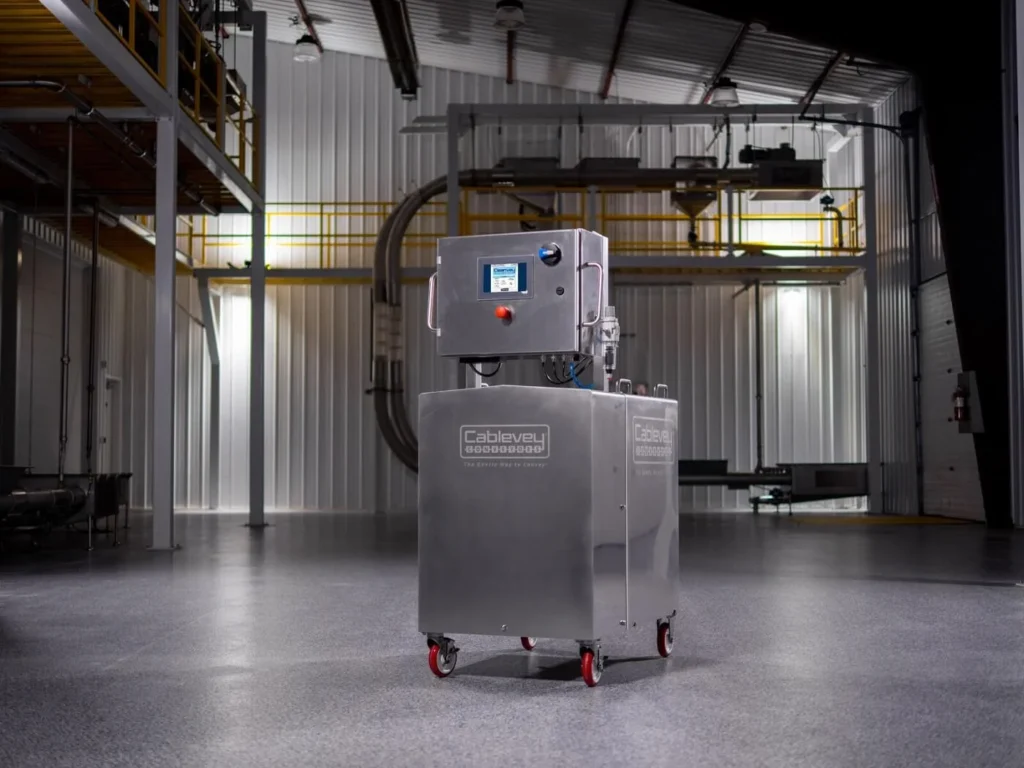
Wood Waste Has Significant Energy Potential
Processing wood for our means generates byproducts and waste streams that have significant energy potential. Industries like sawmilling, furniture, wood panels, veneer, plywood, and others can create residues like sawdust, off-cuts, trims, and shavings.
The amount of waste generated varies from industry to industry, depending on the raw material used and the finished product. These are typically due to activities like cutting, trimming, smoothing, sizing, and edging. Because these residues are collected during processing, they are a convenient and relatively inexpensive source of biomass. These wastes can be converted into biofuels and bioproducts (wood pellets, wood chips).
Wood Pellets Require Gentle Handling
Wood pellets are extruded materials that require gentle handling after cooling and are on their way to the packaging station. Companies that need to move these pellets into further processing will often use Cablevey Conveyors bulk material handling equipment, as these systems provide gentle conveying, eliminating breakage and fines in the process.
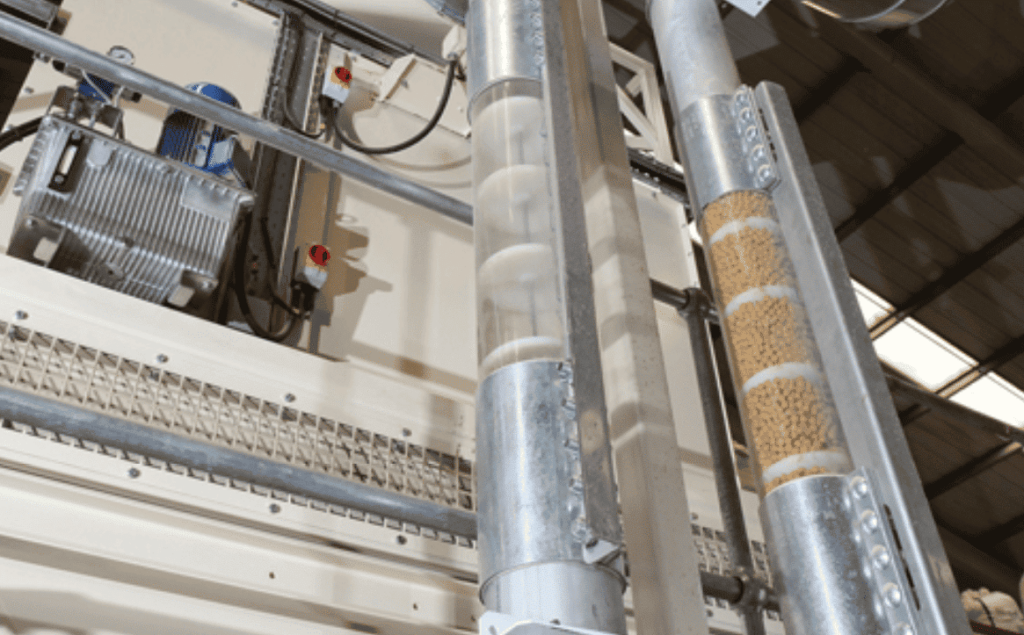
Algae Are Nature’s Multifaceted Bioenergy Producers
Algae feedstocks include a diverse group of organisms that can be harvested for bioenergy. Algae sources include microalgae, macroalgae (seaweed), and cyanobacteria. Many of these algae use sunlight and nutrients to create biomass, which is made up of key components like lipids, proteins, and carbohydrates converted into numerous biofuels and bioproducts.
Municipal Solid Waste Goes From Daily Trash to Bioenergy Treasure
Municipal solid waste, or MSW for short, encompasses residential and commercial garbage that comes from everyday activities. Biomass in MSW includes biodegradable materials that typically make up about 80% of all MSW collected. Extracting the bioenergy potentials of MSW offers us the opportunity to reduce commercial and residential waste by diverting large amounts of it from landfills to biomass power plants.
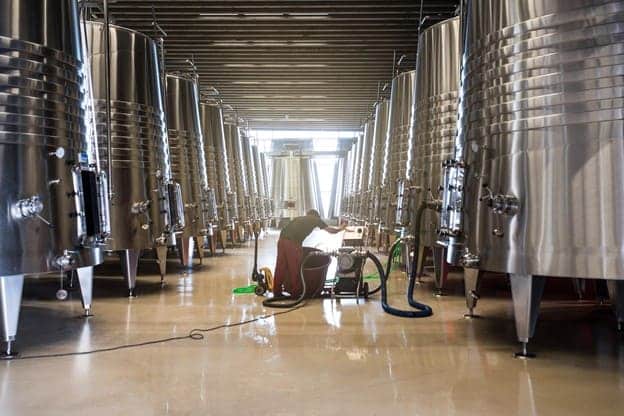
The Basics and Intricacies of Power Production
Many people hear of biomass and its energy potential but are unaware of the complex systems and hard work of generating biomass energy. The first thing to understand is that the biomass field is quite diverse. Biomass can be taken to a biorefinery, biomass power plant, or maybe a biomass processing facility that breaks the materials down and distributes them.
There are abundant resources and many techniques for creating bioenergy. The majority of these techniques handle solid biomass that undergoes various pre-treatments, treatments, and processes to come out as a finished product we use for energy.
Explore What Equipment Is Needed in Biomass Energy Processing and Production
The typical biomass processing and production starts with heavy machinery and a well-trained workforce. People handle gathering feedstock and use heavy machinery to prepare and transport the biomass to their destination. Much of the machinery is often optimized to handle the specific form of biomass that is harvested or collected.
It inevitably requires sizable capital and upfront investments. For example, you’ll probably need a conveyor belt for the warehouse, which means not only will you have to choose the best automation conveyor systems but also ensure you have enough space for it.
Offloading and Storage Process
Once the biomass reaches the plant or refinery, it needs to get offloaded and stored. Storage is a significant challenge for most processes. Plants and biorefineries can process tons of biomass and need to have the proper space to keep it. When the biomass is ready to be used, it gets taken to the processing equipment to begin its bioenergy journey.
Processing equipment reduces particle size to prepare the biomass for incineration in plants or treatment biorefineries. Once treatment is done, the final product (biogas, biofuel, bioenergy) is distributed or used.

The Importance of Conveying Biomass Safely During the Production Process
Although a conveyor belt for food may seem like an easier thing to explain, don’t get discouraged! The simplified breakdown of what goes on behind the scenes shows us an overview of the bioenergy production process. What we don’t see in this description is what holds everything together – conveyors. They are the crucial piece of the puzzle that makes everything work like clockwork.
One of the greatest challenges in the biomass production process is picking the right conveyor. Most facilities are looking for efficient, reliable, high-speed, and high-volume conveyors that can quickly and effectively transport bulk products that often cannot sit outside for extended periods.
The Efficiency of Tubular Cable and Disc Conveyors
Tubular cable and disc conveyors are considered by many to be an optimal solution for conveying renewable energy and biomass material because they provide clean and safe handling of materials. Tube conveyors transport materials within a sealed environment to minimize separation and waste.
It helps ensure that you not only get quick and consistent service that can handle a variety of sizes, weights, and combinations of materials (flake, powder, wet) but that you do not experience any losses in the processing and production line.
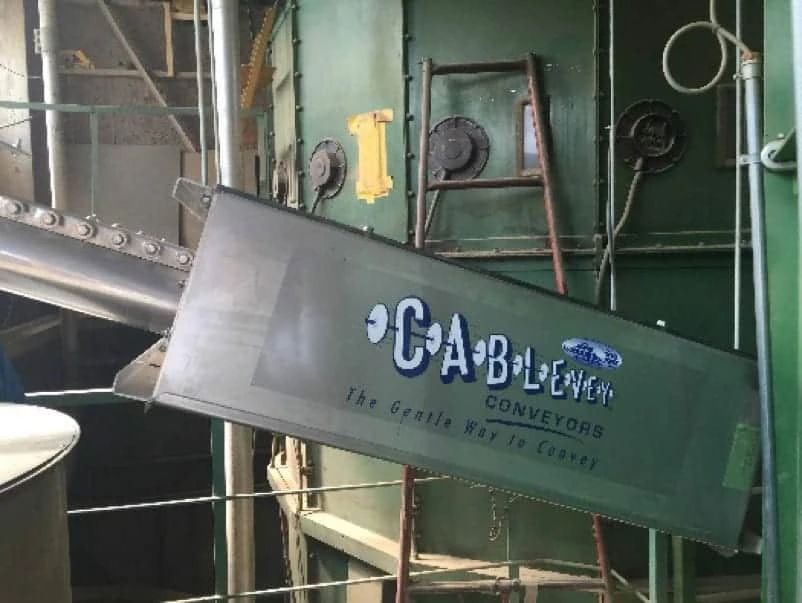
Benefits and Drawbacks of Biomass Energy
Biomass is the oldest form of energy used by people, but it is also the main focus for countries and organizations looking to move away from fossil fuels. Climate change and energy policies are encouraging biomass energy and are thus resulting in a steady rise in production and use. As the world embraces and looks into the integration and use of biomass energy, it is important to consider all of its benefits and drawbacks.
Benefits of Biomass Energy
Availability
One of the best benefits of biomass energy is that it is widely available. Unlike fossil fuels that are limited to a certain location, biomass fuels can be grown and harvested almost anywhere. Sources such as forestry, agriculture, fishery, aquaculture, algae, and waste can all be sources of biomass. It’s also often a byproduct of processes we already use (farming, forest management, food waste).
Reduces Greenhouse Gas Emissions
The environmental benefit of biomass is an essential factor when considering problems like climate change and global warming. Biomass greenhouse gas emission levels are far lower than that of fossil fuels. The main difference between fossil fuels and biomass emissions is in carbon dioxide (CO2) release.
Non-renewable fossil fuels like crude oil and coal are not only contributing to climate change, but they can also be detrimental to our health. Their use can lead to health problems, pollution, and the release of toxins into communities. A cleaner source of energy like biomass enables us to have a more eco-friendly energy substitute.
Reduces Fossil Fuel Reliance
Biomass can help reduce our reliance on fossil fuels. As mentioned earlier, it can be produced from a variety of renewable sources, making it an excellent and sustainable alternative to fossil fuels.
Cost-Effective Energy
Fossil fuels are notorious for being difficult to extract and also require an enormous amount of capital to get extracted. Investors will need oil drills, gas pipelines, fuel collection systems, etc. Biomass technology is a lot cheaper. While there is a relatively high capital requirement for certain biomass energy, it is nowhere near the expenses fossil fuels reach.
Additional Income for Manufacturers
Instead of throwing away organic waste, it can easily be converted into bioenergy. Since biomass energy is often a byproduct of numerous processes, it can serve as an additional income source. Not only can a business help create a more sustainable fuel, but it will also turn its waste into profit.
Less Land Pollution
Diverting waste to biomass energy plants instead of dumping them into landfills can help reduce the number and size of landfills. Having fewer and smaller landfills will help control greenhouse gas emissions and reduce air, land, and water pollution.
Disadvantages of Biomass Energy
While there are numerous advantages to using biomass energy, there are also certain drawbacks that come with it. The first one is that it’s not as efficient as fossil fuels since these are usually the go-to energy source for their ability to generate enormous amounts of power.
While biomass is an energy source that can minimize environmental damage, it can result in deforestation if not practiced well. Proper planning of crop harvesting and forestry can help preserve our natural resources while meeting our energy needs.

Cablevey Conveyors Offer Precision and Performance in the Blossoming Biomass Industry
The renewable energy industry is steadily growing. As biomass production and utilization grow and adapt to meet our needs, it is essential that organizations and businesses use quality equipment. The experts at Cablevey Conveyors understand the intricacies involved with bulk products. Our systems are designed to meet high output, and they can be tailored to fit any processing environment. Years of experience with biomass materials have given our engineers the expertise to construct tubular conveyor systems that help make the process more uniform and efficient from beginning to end. Be sure to contact Cablevey Conveyors and see how you, too, can get a perfect mechanism for transferring materials between systems, rooms, floors, and even to other buildings.

